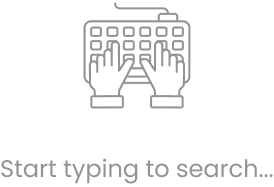


In the real estate industry, where competition is high and timing matters, technology plays a crucial role in success. MLS (Multiple Listing Service) software has changed how real estate professionals work. It helps them manage property listings and ensures smooth communication between agents and clients. But what exactly is MLS software, and why is it so important?
MLS software is the foundation of real estate operations. It provides a single platform to list, search, and analyze properties. Realtors and brokers can access real-time, accurate property details, allowing them to serve clients more effectively.
Whether you manage a few properties or run a large real estate business, MLS software makes operations easier, improves data accuracy, and strengthens client relationships.
How can you develop an effective MLS software solution? How do you ensure it meets your business needs and adapts to future changes?
This guide will walk you through the MLS software development process. You’ll learn about its key features, benefits, challenges, and future trends. By the end, you’ll have a clear strategy to build or invest in MLS software that helps your real estate business grow.
MLS software is a database that helps real estate professionals store and share property listings. It serves as a central platform where realtors can find the latest property details, allowing them to assist their clients efficiently.
In the past, MLS was a physical book where realtors recorded property listings. With digital advancements, it has transformed into an advanced online platform. Modern MLS systems offer features like property management, customer relationship management (CRM), and real-time data sharing.
The main purpose of Multiple Listing Service (MLS) software is to centralize and streamline property listings and real estate data. It allows real estate professionals to efficiently search for, manage, and share property information from a single platform.
Let’s explore the top benefits of MLS software development services:
MLS software helps you manage your real estate business by providing expert advice. If you have questions about a property or the market, you can talk to a real estate agent or broker with MLS access. These professionals can offer valuable insights to help you make better investment decisions.
MLS also offers learning resources like publications and webinars to teach you more about real estate investing. These materials can enhance your market knowledge and make you a smarter investor.
An MLS system connects real estate brokers, investors, and agents. It helps both buyers and sellers.
If you are a buyer looking for a property, the MLS links you to a real estate agent who can access homes that match your interests. If you are a seller, the MLS connects you with potential buyers interested in your property.
Real estate agents use the MLS to showcase properties to a larger audience, increasing the chances of a quick and fair sale. Faster property sales also help stabilize the real estate market and prevent price drops.
Both buyers and sellers benefit when they are matched more efficiently. Buyers can easily find the right property, while sellers get the visibility needed to sell quickly at a good price.
MLS data helps make the real estate industry more transparent and efficient, reducing its complexity.
MLS users can view detailed information about properties in the neighborhood. They can access listings, property details, location, size, amenities, and photos of each estate. This data is only available to MLS users, as gathering it without a central database would be difficult. This exclusivity is a major advantage.
The Multiple Listing Service (MLS) is a powerful tool for sellers. It helps their property get maximum visibility among buyers and real estate agents. An MLS listing includes all key details about the property, making it easy for buyers’ agents to find and share with their clients. Since real estate agents from different areas rely on the MLS for property listings, it ensures wide exposure. It also allows agents to work together and split commissions.
MLS benefits both small and large real estate agencies by providing equal opportunities. It helps agents search for properties that match their clients’ budgets and preferences.
Other key benefits of MLS software development include:

Some features to include in your Multiple Listing Service (MLS) software development process for real estate industry are given as follows:
AR and VR are valuable features for real estate MLS software. Adding Augmented Reality (AR) and Virtual Reality (VR) lets you provide immersive property experiences. AR enhances property images with extra details, while VR enables virtual tours, allowing clients to explore homes from any location. This technology helps you attract more clients and make property searches more interactive.
Real estate MLS software should include efficient management tools to keep everything organized. These tools help both you and the buyer by simplifying the workflow. You can quickly create, update, and track contracts and property listings within the software. It stores all documents in one place, minimizes errors, and speeds up transactions.
The “Filter” option helps you quickly find properties that match specific needs. You can filter by location, price, size, and other features, making it easier to connect clients with their ideal homes. This feature in real estate MLS software saves time and enhances the client experience by showing more relevant results.
Virtual tours are a key feature of real estate MLS software. They let buyers explore properties without visiting in person. You can offer 360-degree views or interactive walkthroughs, helping clients see the space realistically. This is especially useful for buyers from other locations or during the early stages of property searches.
A “Favorites” tab allows you and your clients to save and access preferred properties easily. This feature in real estate MLS software helps clients track properties they like and simplifies their decision-making. It also lets you quickly find and follow up on high-interest listings.
The most useful feature of real estate MLS software is its built-in calculator. It helps you and your clients quickly estimate mortgage payments, property taxes, and other costs. This simplifies property valuation and makes financial planning easier. With instant calculations, clients can better understand the total expenses of a property.
Real estate MLS software lets you manage both contracts and listings in one place. It helps you organize property and transaction details, handle listing information, manage contract documents, and track updates easily. This streamlines operations and reduces paperwork.

The following steps will make your real estate Multiple Listing Service (MLS) software development process easier:
Your MLS software development process should begin with defining your objectives and requirements. Begin by identifying the needs of key stakeholders, such as real estate agents, brokers, and clients, to understand what they require and expect from the software.
Next, set clear goals for the project, focusing on the primary objectives like the features you want to include, how the software should function, and the overall user experience.
Finally, document all requirements by creating a detailed list that covers both functional aspects (such as search filters and virtual tours) and non-functional aspects (like performance and security), including any advanced features like AR/VR integration.
To ensure your MLS software stands out, start by analyzing competitors before starting your MLS software development process. Research existing MLS solutions to see what they do well, where they fall short, and any gaps they leave in the market. This will help you understand what features are popular and where you can offer something better.
Next, make sure you understand current trends in real estate technology. Keep up with the latest advancements and best practices to ensure your software stays competitive and meets the evolving needs of users. This way, you can build a product that is both innovative and relevant.
Once you start your MLS software development process; especially the software; begin with the infrastructure of your software. Choose the right technology stack, which means selecting the best programming languages, databases, and servers that will handle growth, perform well, and keep data secure.
Design the system architecture by mapping out how everything will fit together. This includes figuring out how data will flow through the system, how different parts of the software will connect, and how users will interact with the interface. This planning ensures your software is efficient and reliable.
Developing MLS software for real estate services is a time-consuming and tedious task. Thus you require a dedicated and experienced team of developers who would make your task easy-breezy.
Your team of developers for a MLS software development process should include:
To bring your MLS software to life, start by building MVP. MVP is the origin of the MLS software. Develop wireframes and MVP to sketch out how the user interface will look and work. This helps you visualize the design and get feedback from stakeholders before moving forward.
This is followed by code development in the MLS Software development process. By writing the code based on your design and requirements you can focus on implementing core features like property listing management, search tools, and client portals. Once you have the basics, integrate additional features like AR/VR for immersive experiences, virtual tours, and third-party APIs for things like payment processing and CRM systems. This ensures your software has all the advanced functionality you need.
The final and crucial step in the MLS software development process is testing and deployment. Perform unit testing to check each component’s functionality, then do integration testing to ensure all features work together seamlessly. Conduct User Acceptance Testing (UAT) with real estate professionals to get feedback on usability. Fix any bugs or issues that arise. Next, prepare for deployment by setting up servers and databases, then launch the software in a live environment. Continuously monitor its performance, security, and user feedback to address any problems and ensure smooth operation.
Zealous System is a leading real estate software development services provider with extensive experience in developing custom software applications, including MLS (Multiple Listing Service) software. MLS software is crucial for real estate professionals, as it facilitates the listing, searching, and management of property data. Zealous System’s expertise in this field can help you create a powerful, efficient, and user-friendly MLS system tailored to your specific needs.
We ensure:
✔️ Developers with domain expertise.
✔️ Adoption of agile methodologies.
✔️ Use of the latest technology to deliver high standards.
✔️ Transparent communication to build trust.
✔️ Rigorous testing throughout the development process.
Check our Work:
Let us help you gain a competitive edge. Don’t let outdated systems hold you back—contact us today to start your journey towards a more efficient, effective MLS solution. Let’s build something extraordinary together and make your app the talk of the town!
Our team is always eager to know what you are looking for. Drop them a Hi!
Comments